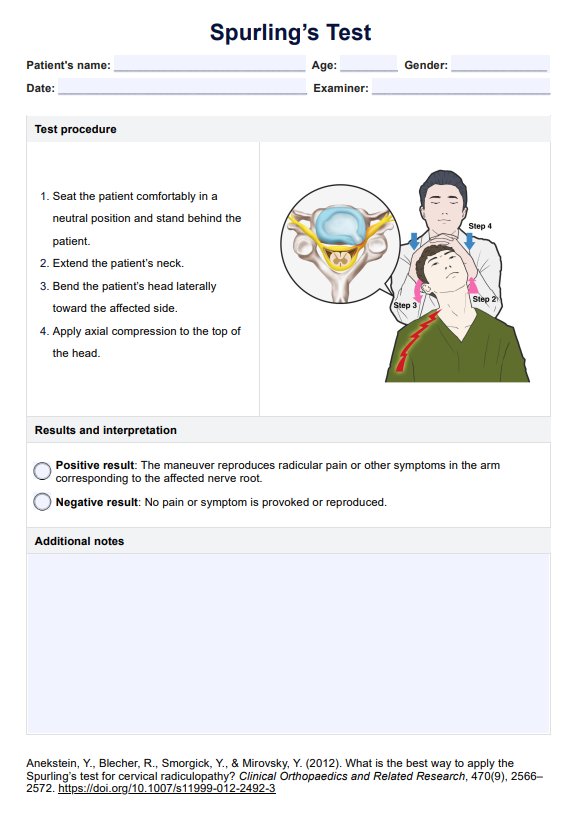The four common tests for cervical radiculopathy are Spurling’s Test, Shoulder Abduction Test, Cervical Distraction Test, and Upper Limb Tension Test. These tests are for evaluating cervical nerve root compression and diagnosing cervical radiculopathy.

Spurling’s Test
Discover Spurling's Test, a test for cervical nerve root compression. Learn how it works and what to expect during the examination.
Use Template
Spurling’s Test Template
Commonly asked questions
To perform Spurling’s Test, extend the patient’s neck, laterally flex it towards the affected side, and apply downward pressure. If the maneuver reproduces the patient’s symptoms, the test is considered positive.
Positive test results for the Spurling’s Test involve reproducing the patient’s radicular pain, numbness, or tingling. Our template provides a graphic to guide proper positioning.
EHR and practice management software
Get started for free
*No credit card required
Free
$0/usd
Unlimited clients
Telehealth
1GB of storage
Client portal text
Automated billing and online payments











